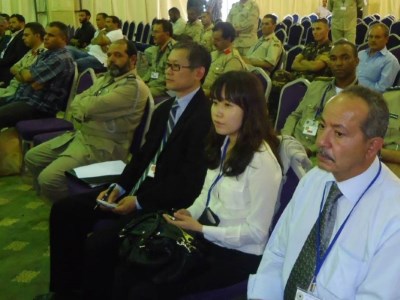China’s Chengdu J-20 stealth fighter has been engaged in advanced tests that utilize swarms of drones to outperform the US Air Force’s F-22 Raptor fighter. These tests involve using drones as reconnaissance and attack
assets, greatly enhancing the J-20’s combat capabilities.
The Chengdu J-20, known as the Great Dragon, is a fifth-generation stealth fighter in China, designed to challenge the air superiority of its Western counterparts, particularly the US F-22 Raptor and F-35 Lightning II. With its development dating back to the late 1990s, the J-20 has evolved into not only a symbol of China’s military ambitions but also a testament to its growing air capabilities.
Last December, China’s Chengdu J-20 stealth fighter underwent tests that sparked controversy in air combat simulation circles. According to various sources, the simulations deliberately reduced the J-20’s radar detection and stealth capabilities to match those of its American counterpart.
Yet in every scenario, the J-20 achieved an impressive 95 percent win rate, a feat attributed to its ability to operate in concert with two or three unmanned combat aircraft.
These drones, which function as reconnaissance and skirmish aircraft, could identify, engage, and overwhelm targets with multi-vector attacks, paving the way for the human-piloted J-20 to deliver the final blow. This synergy between manned fighters and unmanned assets has changed the dynamics of air superiority engagements.
In these exercises, the J-20 acts as a command node for the UAV squadron, overseeing operations as the UAVs act as eyes and ears, expanding situational awareness and target acquisition. This setup allows the J-20 to focus on delivering decisive strikes while the UAVs manage secondary targets or disable defenses.
The simulations and demonstrations highlighted the J-20’s role in controlling and coordinating the actions of the UAVs, simulating scenarios including early warning and combat reconnaissance. Integrating UAVs with manned fighters like the J-20 is at the core of China’s new combat strategies, with the UAVs engaging first to confuse and weaken enemy air defenses, paving the way for the J-20 to deliver a decisive strike.
Technologically, these tests show that China is moving forward in integrating advanced communications systems and algorithms that enable seamless operation between the stealth fighter and its fellow UAVs. This could represent a major shift in air warfare tactics, potentially giving the J-20 the upper hand in simulated engagements against top-tier adversaries like the F-22.
The J-20 is a single-seat, twin-engine stealth fighter focused on air dominance and precision strike capabilities. Its design incorporates several stealth features, including an angular fuselage, angled vertical stabilizers, and a radar-absorbent coating.
These elements are intended to reduce the aircraft's radar cross section, making it difficult for enemy radar to detect or track the aircraft. The airframe allows for internal weapons bays, which are essential for maintaining stealth while carrying a large payload, including long-range air-to-air missiles such as the PL-15 and PL-21, as well as air-to-ground munitions.
An important aspect of the J-20's equipment is its avionics suite. It is equipped with an advanced Type 1475 series radar, which provides long-range detection and tracking capabilities.
This radar, combined with other sensors such as the Electro-Optical Targeting System [EOTS] and Infrared Search and Track [IRST] systems, allows the J-20 to attack targets in a variety of conditions without relying solely on radar, thus reducing its detectability. Powering the J-20 has been a major focus of its development and the latest versions of the J-20 are equipped with more powerful Shenyang WS-15 engines. These engines provide higher thrust, perhaps around 180 kN each, allowing for superior speed, improved maneuverability, and the potential for future integration of directed energy weapons or more advanced sensor systems due to increased power availability.












 English
English  العربية
العربية 








